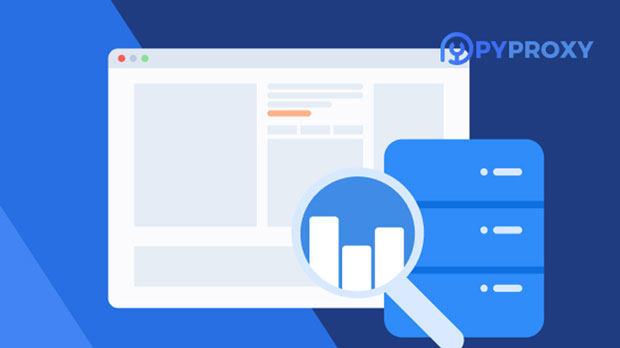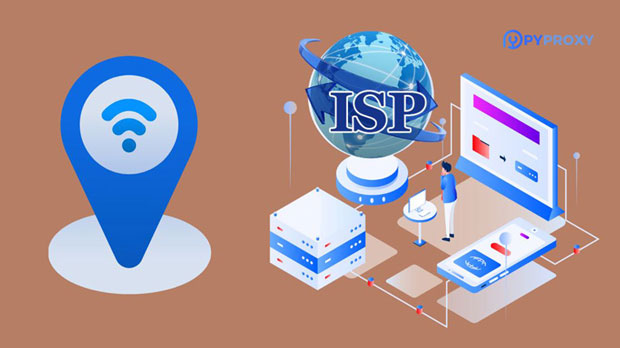LunaProxy vs PYProxy.com Spinning Residential Proxy, which is better for sensitive data analysis?
When it comes to sensitive data analysis, choosing the right proxy service is essential for ensuring privacy, security, and reliability. Rotating residential proxies have become a popular tool for such tasks, but with multiple options available, how do you decide which one suits your needs? Two major contenders in the market are LunaProxy and PYPROXY.com, both offering rotating residential proxies designed for anonymity and data collection. In this article, we will conduct an in-depth comparison of both services, analyzing their features, security measures, performance, and suitability for sensitive data analysis. By the end, you will have a clearer understanding of which proxy service fits your needs better. Understanding Rotating Residential ProxiesRotating residential proxies are essentially IP addresses assigned to real residential devices, allowing users to route their web requests through these IPs. This ensures higher levels of anonymity and avoids detection mechanisms commonly used by websites to block or flag data scrapers and other automated activities. Unlike data center proxies, residential proxies are harder to identify as they come from actual households, making them ideal for sensitive operations such as data analysis, market research, and competitive intelligence.When performing sensitive data analysis, users must prioritize certain factors such as privacy, security, speed, and the ability to handle large-scale requests without triggering alarms. Both LunaProxy and PYProxy.com offer these features, but they vary in how they deliver them. Let’s dive deeper into these factors.Security and PrivacySecurity is a critical consideration when working with sensitive data, particularly in industries where confidentiality is paramount. Both LunaProxy and PYProxy.com claim to provide high-level security, but the way they handle user data and privacy protection varies.LunaProxy has a strong focus on encryption and security features to prevent any form of data leakage. The service uses a combination of SSL encryption and private IP rotation to ensure that no identifiable information is linked to the user’s actions. They also guarantee that no data is logged, which is particularly important for clients handling sensitive information such as financial records or personal data. This no-logging policy allows users to confidently perform data analysis without worrying about their activities being tracked or exposed.On the other hand, PYProxy.com offers similar security measures, including IP rotation and encryption, but may not be as transparent with its logging policies. While the service claims not to log user activity, users may need to inquire directly for more detailed information about their privacy practices. For individuals or businesses working with highly sensitive data, it’s crucial to ensure that the proxy provider adheres to stringent privacy standards, and LunaProxy’s transparency gives it an edge in this category.Performance and SpeedWhen dealing with large datasets or real-time sensitive data analysis, speed and performance are essential. Delays or interruptions can compromise the quality of the analysis and lead to errors or missed insights. Both services provide rotating residential proxies, but their performance can differ based on factors such as network infrastructure, the number of available IP addresses, and geographical location.LunaProxy is known for its robust performance, particularly when accessing geo-restricted or location-specific data. The service has a large pool of residential IPs, allowing users to maintain fast speeds and reliable connections even when scraping large volumes of data across multiple locations. The rotation of IPs is smooth and doesn’t cause significant latency, ensuring that sensitive data analysis tasks can be performed efficiently without noticeable slowdowns.PYProxy.com also delivers decent performance, but its network infrastructure may not be as optimized as LunaProxy’s. Some users have reported occasional dips in speed, particularly when trying to connect to IPs located in more remote or less common regions. While the proxy service works well for most tasks, those involved in sensitive data analysis may find the need for faster connections and more reliable IP addresses in specific locations. LunaProxy’s extensive infrastructure makes it a more favorable option in terms of performance.Customization and FlexibilitySensitive data analysis often requires a high level of customization. This can include the need for specific geographic locations, IP types, or request patterns to match particular analytical needs. Both LunaProxy and PYProxy.com offer some degree of flexibility, but LunaProxy provides a broader range of options in this area.LunaProxy allows users to customize their proxy requests extensively. Whether it’s choosing IPs from specific cities or countries, managing request frequency, or setting up automatic IP rotation schedules, LunaProxy’s platform is designed to accommodate detailed configurations. This is especially useful for data analysis tasks that require precise control over the proxy environment to ensure the data collection is as accurate as possible.PYProxy.com, while offering rotation and geographic targeting, may not have the same level of granularity when it comes to customizing requests. Users may have to rely on default settings or a limited set of options, which could be restrictive for those running advanced or large-scale data analysis projects. Therefore, LunaProxy has the upper hand in terms of customization and flexibility.Customer Support and DocumentationEffective customer support and easy-to-understand documentation are vital when working with a tool as complex as rotating residential proxies, especially when sensitive data analysis is at stake. Both services provide customer support, but the quality of this support and the available resources can make a significant difference in how easily users can resolve issues or fine-tune their proxy configurations.LunaProxy offers 24/7 customer support through various channels, including email and live chat. Their documentation is comprehensive and covers a wide range of topics, from getting started to advanced configuration techniques. The support team is responsive and well-versed in helping users troubleshoot technical problems or answer any questions about privacy and security features.PYProxy.com also offers customer support, but the responsiveness may not be as consistent as that of LunaProxy. Some users have reported delays in receiving assistance, which could be an issue when time-sensitive data analysis tasks need immediate attention. While their documentation covers the basics, it may not be as detailed as LunaProxy’s, leaving some advanced users looking for more in-depth guides or explanations.Scalability and PricingFor large-scale data analysis projects, scalability is a key factor. The ability to handle multiple simultaneous requests or analyze data across various IP addresses without hitting limits can make or break a project. Additionally, the cost-effectiveness of each service must be considered.LunaProxy offers scalable plans tailored to different types of users. Whether you need a small number of IPs for a limited project or a vast pool of residential IPs for large-scale data analysis, LunaProxy’s pricing is flexible, allowing you to scale up or down depending on your needs. While it may be slightly more expensive compared to PYProxy.com, the service justifies the price with its superior infrastructure and enhanced features.PYProxy.com provides more affordable options, which can be appealing to smaller businesses or individuals with basic proxy needs. However, when it comes to handling large-scale sensitive data analysis, the service may not offer the same level of scalability as LunaProxy. Users working with high-volume or high-demand projects may find themselves needing to upgrade more frequently, which could add to the overall cost over time.ConclusionIn conclusion, both LunaProxy and PYProxy.com offer rotating residential proxies suitable for sensitive data analysis. However, LunaProxy stands out as the better option for businesses and individuals dealing with highly sensitive data. Its superior security features, reliable performance, flexibility, and scalability make it the ideal choice for those who prioritize privacy, speed, and customization. While PYProxy.com offers a more affordable alternative, it may not provide the same level of performance and customer support needed for large-scale or mission-critical data analysis tasks. Therefore, for users seeking a secure, efficient, and customizable proxy solution for sensitive data analysis, LunaProxy is the clear winner.
2025-02-22

























































